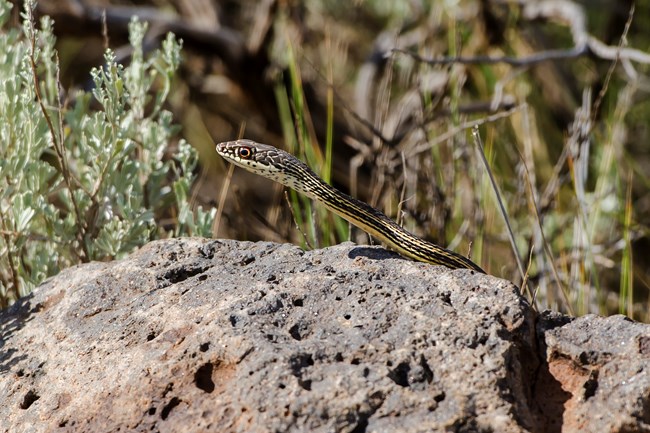
NPS This fast moving snake hunts by slithering along with their heads held high or waiting for unsuspecting prey while perched in a tree or shrub. Lacking the flashier weapons in a snake arsenal- like venom, or powerful constricting coils- the striped whipsnake depends on his tongue for hunting and gathering information about its potential prey. Once a meal is caught they will wrap their long slender body around it to keep it still enough to swallow. Striped whipsnakes can live 10-20 years in the wild. Males usually mature 1-2 years before females with mating usually occurring in April and May. Females may nest in an abandoned burrow where they will lay a clutch of 3-12 eggs. The 14-17 inch hatchlings emerge around August. |
Last updated: February 8, 2019
